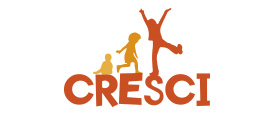Does your character's behavior make sense?

Have you ever found yourself in a situation where someone behaves unpredictably and destabilizes the moment? Imagine telling a joke during a lunch break with colleagues, but instead of laughter, one of them starts crying or angrily leaves the room. In that moment, you feel confusion (What just happened?), guilt (What did I say?), and judgment (Wow, they’re unstable!).
The principle of cause and effect is crucial, both in real life and storytelling. It helps us predict reactions and gives us control. Similarly, readers expect characters' actions and decisions to follow a logical pattern, driven by their desires, fears, and beliefs.
To ensure readers understand character behavior, we must deeply explore what motivates them, what they fear, and what they believe in. This deep understanding allows us to accurately predict how they will react in any situation. For writers, this is "narrative gold" – the story practically writes itself.
Several factors influence a character’s behavior, including:
1. Emotional Range
Each person has their own way of managing and expressing emotions, ranging from reserved to expressive. Characters are no exception. Understanding their "emotional baseline" helps differentiate between normal reactions and emotional escalations. Conflict often amplifies emotions, pushing characters to their limits, which enhances the story by revealing unexpected behaviors and vulnerabilities.
To define this emotional baseline, it’s useful to imagine how a character behaves in everyday situations. What emotions do they express when they feel safe? How do they react when threatened or vulnerable? Common emotions such as satisfaction, joy, nervousness, worry, or fear manifest differently depending on the character. These responses serve as a foundation for understanding their emotionality.
When pressure increases, it becomes easier to anticipate how their reactions will intensify. This not only enriches the story but also allows for emotional growth, as characters confront their limitations and make mistakes along the way. These emotional extremes push the character to make missteps, taking them out of their comfort zone, making the narrative more engaging and tense.
2. Personality
A character's personality traits serve as the compass that guides their behavior, influencing not only how they interact with others but also how they perceive the world and pursue their goals. For example, a character with positive traits like altruism or resilience will face challenges proactively, while negative traits, such as selfishness or fear, will create obstacles that slow their progress.
Planning a character's positive traits helps to see how these traits can guide them toward constructive solutions during the story, while negative traits – particularly their main flaw – highlight which behaviors or attitudes hold them back from achieving their goals. This dichotomy between strengths and weaknesses forms the core of the character's growth, their narrative arc.
In short, the combination of positive and negative traits is fundamental in tracing the character’s emotional and personal journey. Positive traits provide a solid foundation to face the story’s challenges, while flaws create internal conflicts that push the character to evolve. The character’s transformation involves not only overcoming external obstacles but also facing their insecurities or inner fears, showing what they need to change in themselves to reach their final goal.
Ultimately, a deep understanding of a character's personality traits not only enriches the plot but also makes every action, decision, and growth more authentic and coherent.
3. Personal History
A character’s past is key to understanding their actions and reactions in the present. Every experience, both positive and negative, contributes to shaping their worldview and influencing their behavior. Emotional wounds, in particular, can lead to the development of defense mechanisms, known as "emotional shields." These shields serve to protect the character from further pain, but at the same time, limit their personal growth, hindering their ability to face new challenges or evolve as an individual.
Traumatic experiences, for example, can lead a character to develop a tendency to isolate themselves or mistrust others, which interferes with their ability to form genuine relationships. At the same time, the character may find comfort in these dysfunctional behaviors, seeing them as a form of self-defense. However, these mechanisms not only hold them back but also contribute to creating internal and external conflicts, increasing the complexity of their evolution.
Additionally, a character's past not only shapes their emotional shields but also influences how they approach and manage problems. If they have overcome difficult situations in the past, they may develop resilience or problem-solving skills. Conversely, if they have faced failures or disappointments, they may approach new challenges with fear or hesitation. These elements add layers to the narrative, as the character is not only the product of their present but also of their past.
4. Motivation
What a character desires most, whether a concrete goal (like wealth or success) or an abstract one (such as love or freedom), is a crucial element that influences all their actions. This motivation serves as the driving force that pushes them to confront their limits, overcome their fears and flaws, and evolve throughout the story. The most powerful motivations are often tied to fundamental needs, like love, security, or a sense of belonging, which are essential to their personal fulfillment.
These deep desires generate tension, lead to conflicts, and drive action. A character may be willing to sacrifice much to achieve their goal, putting relationships, principles, or even their identity at risk. This dynamic between motivation and action is crucial to developing a believable and engaging character.
Furthermore, motivations are not static; they can evolve throughout the story, becoming stronger or even changing as the character gains new experiences and perspectives. Character growth is often defined by the transition from superficial goals to deeper needs, such as love or personal fulfillment. Through this transformation, the character not only resolves their external conflicts but also finds inner peace.
5. Interactions with Others
Relational dynamics are key to defining a character's behavior. For example, an introverted character may tend to withdraw or avoid confrontation in conflict situations, while an extroverted character might face the problem head-on or seek support from others. Relationships can create tension, fuel rivalries, or form alliances that profoundly influence the character’s actions. In fact, social interactions can reveal aspects of the character that would otherwise remain hidden, pushing them to react in unexpected ways.
Relationships can also serve as mirrors for the character, revealing flaws or strengths that they themselves cannot recognize. In some cases, relationships may be a source of internal conflict, as the character may find themselves torn between the desire to maintain a bond and the need to pursue their personal goals. Likewise, relationships can act as catalysts for personal growth: a strong friendship or rivalry can push the character to change, confront their weaknesses, or develop new qualities.
These relational dynamics enrich the narrative, introducing emotional nuances and conflicts that go beyond the events of the main plot. Alliances, betrayals, love, or loss are all elements that can drive characters to react in ways that reflect the complexity of their relationships, creating a level of emotional tension that keeps the reader engaged in the story.
6. Beliefs and Values
Every character is guided by a set of beliefs and values that form their moral code and influence their decisions. These principles act as an internal compass, guiding how they face challenges and interact with others. However, these beliefs are not always perfectly aligned: they can come into conflict with each other, creating internal tension. For example, a character may be torn between the desire to remain loyal to a friend and the moral integrity that compels them to do the right thing, making their behavior complex and layered.
This internal conflict not only enriches the psychological depth of the character but also offers opportunities for more interesting narrative development. As the character confronts these contradictions, they are forced to make difficult choices that reveal their true nature and help them evolve. A character's value system is not static; it can change as the story progresses, especially when significant events test their most deeply held convictions.
Ultimately, a character’s values and beliefs not only determine their actions but also serve as fertile ground for their growth and transformation throughout the plot. Through these internal conflicts, tension and drama are created, fundamental elements for keeping readers engaged and bringing memorable and authentic characters to life.
7. Social and Cultural Context
The context in which a character lives – shaped by social, cultural, and economic factors – has a decisive influence on their behavior and choices. Social expectations can push them to conform to established norms or, conversely, rebel to assert their identity. External pressures, such as economic inequalities or rigid cultural norms, create additional obstacles that the character must face, often placing them in a position of conflict between the desire for belonging and the need for freedom or authenticity.
Cultural norms can subtly shape behavior, imposing limits or privileges depending on the context, and this determines how the character relates to others and their challenges. A character from an oppressive culture might have a conflicted relationship with authority, while one raised in a more liberal environment might struggle with uncertainty or the absence of defined rules. The economic context also affects their ability to act: a character from a poor background may be driven by survival, while one with resources may have more idealistic or abstract goals.
In short, the social and cultural context is a lens through which the character perceives and responds to the world. This influences their ambitions, their internal conflicts, and the way they face challenges, making them more complex and realistic within the narrative.
By combining all these factors, an author can create a character that reacts in a consistent and believable way, making the story compelling and engaging for readers.
By accepting you will be accessing a service provided by a third-party external to https://insightadv.uk/

 IT
IT  EN
EN 
































































Comments